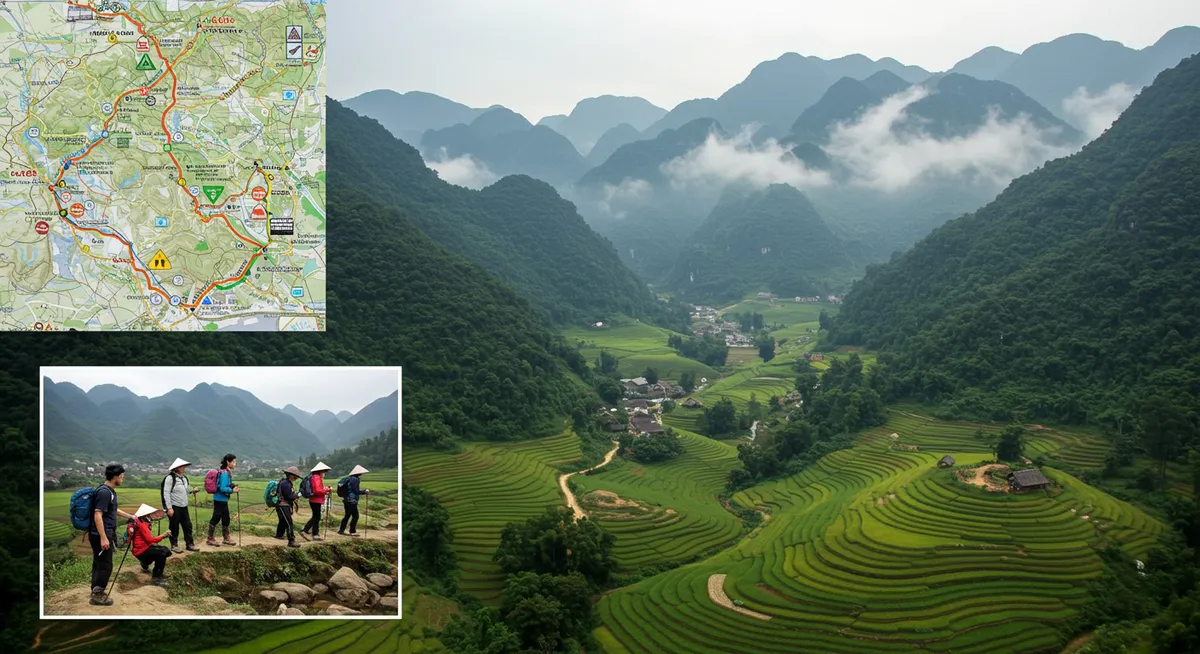
Sapa Trekking Routes: Difficulty & Best Paths
Table of Contents
Want to find the best nature experiences for this destination? Chat with our nature tourism specialist!
Get Nature TipsCategory: sapa-trekking-routes-and-difficulty
Your Essential Guide to Sapa Trekking Routes
As someone who has personally explored the lush, terraced landscapes of Sapa, I can attest that few places offer such a diverse range of trekking experiences. From gentle strolls through vibrant rice fields to demanding climbs up Vietnam's highest peak, understanding the various Sapa trekking routes and difficulty levels is crucial for an enjoyable adventure. This guide will help you navigate Sapa’s stunning trails, ensuring you pick the perfect path for your skill level and desired immersion into the region's natural beauty.
Easy Sapa Trekking Routes for All Abilities
For those seeking a gentle introduction to Sapa's beauty, several easy Sapa trekking routes offer breathtaking scenery without strenuous effort. These paths are ideal for families or casual walkers, often meandering through picturesque villages like Cat Cat or Lao Chai, offering glimpses into local H'mong life. You'll witness stunning vistas of the iconic Sapa rice terraces, which are especially vibrant during planting or harvest seasons. My personal tip: take your time here, absorbing the tranquil atmosphere. These routes are perfect for appreciating Sapa's rice terraces and immersing yourself in the local culture, providing a truly memorable experience.
Moderate Sapa Trekking Adventures
Stepping up in intensity, moderate Sapa trekking routes combine stunning natural beauty with a more substantial physical challenge. Treks to villages like Ta Van or Giang Ta Chai often involve longer distances and some uphill sections, rewarding trekkers with panoramic views and deeper cultural encounters. These routes provide a fantastic way to experience the diverse Sapa nature attractions, from cascading waterfalls to dense bamboo forests. As an experienced traveler, I've found these treks strike an excellent balance, allowing for genuine immersion without requiring specialized gear. You'll navigate varied terrain, encounter friendly ethnic minority communities, and truly earn those spectacular valley views, showcasing the incredible landscape of Sapa.
Challenging Sapa Treks for Experienced Hikers
For seasoned adventurers, Sapa offers challenging trekking routes that test endurance and skill. The most renowned is the ascent of Fansipan, Vietnam's highest peak. This arduous Sapa trekking route demands excellent physical fitness, proper equipment, and ideally, a local guide due to the steep, often muddy terrain and unpredictable weather. Other challenging treks might include longer, multi-day excursions to remote villages, providing an unparalleled sense of accomplishment and solitude. Having personally witnessed the dedication required for these tougher trails, I advise ample preparation. Consider linking up with local experts for an unforgettable Fansipan Mountain trekking guide, ensuring a safe and rewarding experience.
Tips for a Successful Sapa Trekking Experience
Regardless of which Sapa trekking routes you choose, a few essential tips will enhance your adventure. Always wear sturdy, waterproof hiking boots, as trails can be slippery, especially during the rainy season. Dress in layers, as Sapa’s weather can change quickly, moving from warm sunshine to cool mist within hours. Bringing a local guide is highly recommended, not only for navigation but also for invaluable cultural insights and safety, particularly when exploring areas near Sapa's impressive waterfalls. Stay hydrated and carry snacks. Remember, flexibility is key; embrace the unexpected encounters and changing landscapes that make Sapa trekking truly unique.
Frequently Asked Questions
Do I need a guide for Sapa trekking?
What should I pack for Sapa trekking?
When is the best time to trek in Sapa?
Embarking on a Sapa trekking adventure promises an unforgettable journey through some of Vietnam's most spectacular landscapes. By understanding the diverse Sapa trekking routes and difficulty levels, you can tailor an experience that perfectly matches your abilities and interests. Whether you seek a leisurely village stroll or a challenging ascent, Sapa's trails offer profound connections to nature and local culture. Plan your trek thoughtfully, prepare adequately, and immerse yourself fully in the breathtaking beauty that awaits. Explore more of Sapa's wonders at TouristNature.com.